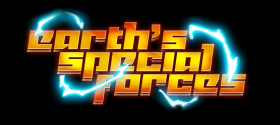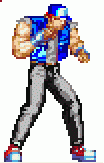Name: Speaks for itself. The creature's name or type, plus whether or not it is a minion, rival, or nemesis.
Alignment, Size, Type, and Tags: A creature’s listed alignment represents the norm for such creature and provides a clue to its disposition and how it behaves in a roleplaying or combat situation. For example, a Chaotic Evil monster might be difficult to reason with and might attack characters on sight, whereas a neutral monster might be willing to negotiate.
The alignment specified in a creature's stat block is the default: an individual’s can vary; Feel free to depart from it and change a creature's alignment as you require to suit the needs of your character. If you want a good-aligned Green Dragon or an evil Storm Giant, there's nothing stopping you.
Some creatures can have any alignment. In other words, you choose the creature's alignment. Some creature's alignment entries indicate a tendency or aversion toward law, chaos, good, or evil. For example, a frenzied berserker can be any chaotic alignment (chaotic good, chaotic neutral, or chaotic evil), as befits its wild nature.
Many creatures of low intelligence have no comprehension of law or chaos, good or evil. They don't make moral or ethical choices, but rather act on instinct. These creatures are unaligned, which means they don't have an alignment.
A creature can be Tiny, Small, Medium, Large, Huge, or Gargantuan. A creature’s size determines its how much space a creature of a particular size controls in combat and reach.
Some innate abilities come from the creature’s type and tag. A creature's type speaks to its fundamental nature. Certain spells, magic items, class features, and other effects in the game interact in special ways with creatures of a particular type. For example, an Arrow of Dragon Slaying deals extra damage not only to Dragons but also other creatures of the Dragon type, such as Dragon Turtles and Wyverns.
This Bestiary are sorted by these creature types, which have no rules of their own.
A creature might have one or more tags appended to its type, in parentheses. For example, an Orc has the Humanoid (Orc) type. The parenthetical tags provide additional categorization for certain creatures. The tags have no rules of their own, but something in the game, such as a magic item, might refer to them. For instance, a spear that is especially effective at fighting Demons would work against any monster that has the Demon tag.
Description/Manifestation: A section describing the creature.
Motivation: What drives the character or creature? We’re talking high concept rather than detail here. A word or two that describes the character’s goals is usually enough. Some monsters are single-issue creatures ("Kill humans!" "Feed"). "Release Cthulhu" is also not uncommon for an Earth-based Series focusing on cultist activity.
Species:The species—Human, hybrid, deep one, mi-go, ghoul, mutant monstrosity, and so on.
Limitation: *"The only rules that really matter are these: what a man can do and what a man can't do."* — Jack Sparrow
Environment: The regions, climates, and terrain in which the creature is typically encountered are listed here, though you’re welcome to use the creature in different environments. typically found. This describes a tendency, but is not exclusionary. A great wyrm gold dragon, for instance, has an environment entry of warm plains, but could also be encountered underground, in cold hills, or even on another plane of existence.
Organization: This entry describes typical groupings the creature might form for this creature type and whether such groups include any other types of creatures. A range of numbers in parentheses indicates how many combatready adults are in each type of group. Many groups also have a number of noncombatants, expressed as a percentage of the fighting population. Noncombatants can include young, the infirm, slaves, or other individuals who are not inclined to fight. A creature's Society section may include more details on noncombatants. If the organization line contains the term "domesticated", the creature is generally found only in the company of other creatures, whom it serves in some capacity. |


 Beware the wilderness, places uncivilized and untamed, for there roam beasts of monstrous intent, and creatures who, though neither good nor evil, despise mankind -- giant insects, man-eating beasts, enormous worms, and hideous serpents. These are not creatures of magic or intelligence, but they are powerful and viscous, and any traveler should be wary of their presence...
Beware the wilderness, places uncivilized and untamed, for there roam beasts of monstrous intent, and creatures who, though neither good nor evil, despise mankind -- giant insects, man-eating beasts, enormous worms, and hideous serpents. These are not creatures of magic or intelligence, but they are powerful and viscous, and any traveler should be wary of their presence...